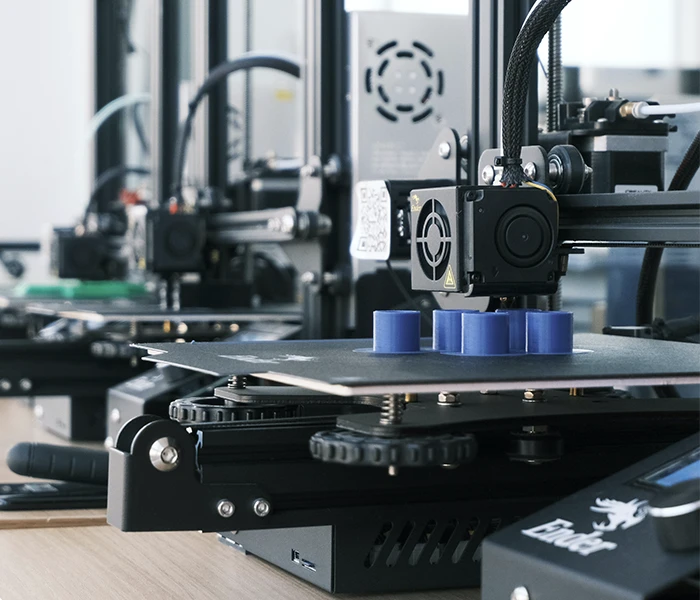
Acquiring essential assets while managing finances can be challenging in the dynamic business landscape. Operating lease emerges as a viable solution, offering flexibility and cost-efficiency to businesses seeking to optimise their operations.
In this blog post, we will explore the concept of an operating lease, its advantages and disadvantages, how it works, and what happens at the end of the agreement. Additionally, we will discuss the types of assets commonly financed through an operating lease and potential tax benefits.
If you’re a business owner or executive in the United Kingdom, understanding the nuances of an operating lease can guide you in making informed decisions about financing your business assets.
- What Is an Operating Lease
- Advantages
- Disadvantages
- How Operating Lease Works
- What Happens at the End of the Agreement
- Types of Assets You Can Finance
- Operating Lease vs Finance Lease
- Potential Tax Benefits
- Accounting for an Operating Lease in the UK
- Other Considerations of Operating Lease
What Is an Operating Lease
An operating lease is a financial arrangement in which a business obtains the right to use an asset for a specific period without the obligation of ownership.
Unlike a finance lease, an operating lease is more like renting an asset. Businesses opt for operating leases when they need access to assets, such as equipment or machinery, without the long-term commitment of ownership.
✅ Advantages
- Flexibility: Operating leases provide your business with flexibility. You can acquire the necessary assets without a significant upfront payment or long-term ownership commitment. This flexibility is particularly beneficial when you anticipate technology upgrades or changes in operational needs.
- Reduced Risk: As the lessor retains ownership of the asset, your business bears less risk of ownership-related costs, such as maintenance, repairs, and potential obsolescence. This reduced risk allows you to focus on your company’s core operations rather than asset management.
- Improved Cash Flow: Operating leases typically have lower monthly payments than financing an asset’s purchase. This results in improved cash flow that you can channel towards other essential business operations.
- Tax Benefits: HMRC treats lease payments for operating leases as operating expenses, and you can deduct them from taxable income. This tax benefit could lower the overall tax liability for your business.
- Access to Latest Technology: Operating leases enable you to access the latest equipment and technology. This access to the newest technology is particularly advantageous in industries where innovation and staying competitive are paramount.
❌ Disadvantages
- Long-Term Cost: Over time, the cumulative payments of an operating lease might exceed the cost of an outright purchase. You must carefully evaluate the total cost and consider the asset’s value to your business’s operations.
- No Ownership Equity: Unlike capital leases, operating leases do not offer the opportunity to build equity in the asset. At the end of the lease term, you do not have the option to purchase the asset at a predetermined price.
- Limited Customisation: Since the lessor retains ownership, you may have limitations on customising or modifying the asset to meet specific operational needs.
Get in touch to get a personalised asset finance quote →
How Operating Lease Works
An operating lease involves a lessor (the leasing company) and a lessee (the business seeking the asset). The process typically follows these steps:
1. Asset Selection
You (the lessee) identify the asset you need for your business operations. This asset could range from machinery and equipment to vehicles or technology.
2. Negotiation
You negotiate the operating lease terms with the lessor. This negotiation includes lease duration, monthly payment amount, and additional terms specific to the asset.
3. Lease Commencement:
Once you agree on the terms, the lessor acquires the asset and leases it to you. Your business gains access to the asset without a significant upfront payment.
4. Lease Payments
You make regular lease payments to the lessor throughout the lease term. These payments cover the use of the asset and are often lower than what you would be required to pay outright ownership.
What Happens at the End of the Agreement
At the end of the operating lease agreement, your business returns the asset to the lessor and concludes the lease agreement. You can then assess your businesses needs and enter into a new operating lease for newer equipment.
Types of Assets You Can Finance
- Office Equipment: Computers, printers, copiers, and office furniture.
- Vehicles: Cars, trucks, vans, and commercial vehicles.
- Machinery: Manufacturing equipment, production lines, and specialised machinery.
- Technology: IT infrastructure, servers, and software.
- Construction Equipment: Bulldozers, excavators, and construction machinery.
Operating Lease vs Finance Lease
| Operating Lease | Finance Lease | |
|---|---|---|
| Ownership | The lessor (leasing company) retains ownership of the asset throughout the lease term. Your business uses the asset without any intention of ownership. | While the lessor technically owns the asset during the lease term, Your business effectively takes on the role of the owner and assumes responsibilities akin to ownership. |
| Duration | Shorter-term agreements, often covering a significant portion of the asset’s useful life but not its entire economic life. | Longer-term agreements, covering a substantial portion of the asset’s economic life, if not the entirety. |
| Accounting Treatment | Payments are treated as operating expenses in the lessee’s financial statements. They are not recorded as assets or liabilities on the balance sheet. | Recorded on balance sheet as both an asset and a liability. The asset is amortised over the lease term, and the liability represents the future lease payments. |
| End-of-Lease Options | You return the asset to the lessor with no further obligations. | You have the option to buy the asset at the end of the term. |
| Risk and Responsibility | The lessor generally bears the risk of obsolescence, maintenance, and repairs. You are primarily responsible for routine maintenance and adhering to the lessor’s usage guidelines. | You are is responsible for maintenance, repairs, and risk associated with the asset’s use, similar to an owner. |
| Tax Benefits | Lease payments are typically deductible as operating expenses, offering potential tax benefits. | Interest expense associated with finance leases is often deductible, providing potential tax advantages. |
Distinguishing Factors
- Ownership Intent: The key distinction between the two lies in the lessee’s intention regarding ownership. In an operating lease, the lessee does not intend to own the asset, whereas, in a finance lease, the lessee often intends to assume ownership by the end of the lease term.
- Accounting Treatment: Operating leases are recorded as expenses, while finance leases involve recording an asset and a liability on the balance sheet.
- Term: Operating leases are typically shorter, covering a substantial portion of the asset’s useful life. Finance leases are longer-term, often covering the asset’s entire economic life.
- End-of-Lease Options: The options available to the lessee at the end of the lease term differ significantly. Operating leases offer more flexibility, while finance leases often involve ownership transfer.
Potential Tax Benefits
Operating leases may offer businesses in the United Kingdom potential tax benefits:
- Tax Deductions: Lease payments are often considered operating expenses and can be deducted from taxable income, reducing the overall tax liability.
- Capital Allowances: Sometimes, your business may claim capital allowances on leased assets, offering further tax relief on the cost of acquiring and using the asset.
Accounting for an Operating Lease in the UK
Accounting for operating leases in the UK follows specific guidelines outlined by the International Financial Reporting Standards (IFRS), specifically IFRS 16. HMRC adopted this standard to ensure consistent and transparent reporting of lease transactions on financial statements.
Recognition on the Balance Sheet
Under IFRS 16, operating leases are treated differently than the previous standard, IAS 17. Previously, operating leases were treated as off-balance-sheet items and disclosed in the footnotes. However, IFRS 16 requires lessees to recognise operating leases on the balance sheet as both an asset and a liability.
- Recognition of Asset:The lessee recognises a right-of-use asset (ROU asset) on the balance sheet. The ROU asset represents the lessee’s right to use the leased asset over the lease term. The initial recognition of the ROU asset is typically at the present value of the future lease payments.
- Recognition of Liability:A corresponding liability is recognised on the balance sheet representing the obligation to make lease payments over the lease term. The liability is also recognised at the present value of the lease payments.
- Amortisation and Interest Expense:Over the lease term, the ROU asset is amortised, and the liability is reduced as lease payments are made. This results in the recognition of both amortisation expense (which reduces the ROU asset) and interest expense (which reduces the liability) on the income statement.
Lease Payments on the Income Statement
Under IFRS 16, the classification of lease payments on the income statement changes. Instead of separating lease payments into operating lease expenses and interest expenses, they are combined into a single “finance cost” (comprising both interest and amortisation) and “depreciation charge” (amortisation of the ROU asset) category on the income statement.
Impact on Financial Ratios
The recognition of operating leases on the balance sheet may affect financial ratios such as debt-to-equity ratios and return on assets. Businesses should be aware of these potential changes in financial ratios and their implications for stakeholders and creditors.
Disclosure Requirements
IFRS 16 mandates certain disclosures related to operating leases in the financial statements. These disclosures provide transparency about lease transactions, the nature of lease arrangements, and their financial impact.
Example
Let’s illustrate the accounting for an operating lease with a simplified example: ABC Company leases office space for five years at an annual rent of £10,000. The present value of the future lease payments, discounted at the company’s incremental borrowing rate of 5%, is £45,763.
- Initial Recognition:
ROU asset: £45,763 - Amortisation and Interest Expense:
Yearly Amortisation (ROU Asset/Lease Term): £45,763 / 5 = £9,153
Yearly Interest Expense (Lease Liability × Borrowing Rate): £45,763 × 5% = £2,288 - Income Statement:
Finance Cost (Interest Expense + Amortisation Expense): £2,288 + £9,153 = £11,441
Depreciation Charge (Amortisation Expense): £9,153
Please note that this example is simplified and does not account for potential adjustments, practical expedients, and complexities that may arise in real-world scenarios.
Businesses should ensure compliance with the standard’s requirements, provide necessary disclosures, and assess the potential effects on their financial statements. Consulting with financial professionals or accountants is advisable to accurately navigate the complexities of accounting for operating leases under IFRS 16.
Other Considerations of Operating Lease
Operating leases offer nuances and considerations beyond their basic definition and differences from finance leases. To make informed decisions about operating leases, here are some additional key points to keep in mind:
Lease Term Flexibility
Operating leases allow your business to tailor lease terms to its needs. This flexibility is advantageous when anticipating technological changes, business requirements, or market conditions.
Maintenance and Repairs
While the lessor often retains responsibility for major maintenance and repairs in operating leases, you are usually responsible for routine maintenance to ensure the asset’s proper functioning.
Upgrade Options
Operating leases allow your business to upgrade to newer equipment or technology at the end of the lease term. This upgrade option is precious in industries where technological advancements occur rapidly.
Lease Payment Structure
Operating lease payments are typically lower than finance leases or outright purchases. This payment structure can improve your business cash flow, especially in the short term.
Sector Applicability
Operating leases are commonly used in industries that require frequent equipment updates, such as technology, healthcare, and transportation. They are suitable when equipment tends to become obsolete relatively quickly.
Lease Initiation Costs
In operating leases, initial costs such as installation, delivery, and training are often lower than finance leases. These lower initiation costs can make it more attractive for businesses seeking immediate access to equipment.
Accounting Considerations
Operating lease payments are treated as operating expenses and do not affect the balance sheet significantly. This treatment can help maintain financial ratios and meet lending requirements.
Risk and Obsolescence
Operating leases allow your business to mitigate the risk of asset obsolescence. Your company can replace outdated equipment with more advanced models as technology evolves.
Long-Term Commitment
Operating leases are characterised by shorter terms than finance leases. This may benefit businesses concerned about long-term commitments or changing operational needs.
Lease Termination Considerations
While operating leases offer flexibility, there may be costs associated with early termination, depending on the terms of the agreement. Understanding the potential financial implications of ending the lease prematurely is essential.
Professional Advice
Due to the complex nature of operating leases and their potential impact on financial statements and taxes, seeking advice from financial professionals, such as accountants or tax advisors, is highly recommended. They can help you understand the financial implications and choose the most suitable lease arrangement for your business.
Conclusion
Operating leases provide businesses in the United Kingdom with a flexible and cost-effective solution to access essential assets without the commitment of ownership. While they offer advantages such as flexibility, improved cash flow, and access.
Get in touch and let us save you time, money and effort getting you the right asset finance for your business.
info@dorsiafinance.co.uk | 01522 420 420


